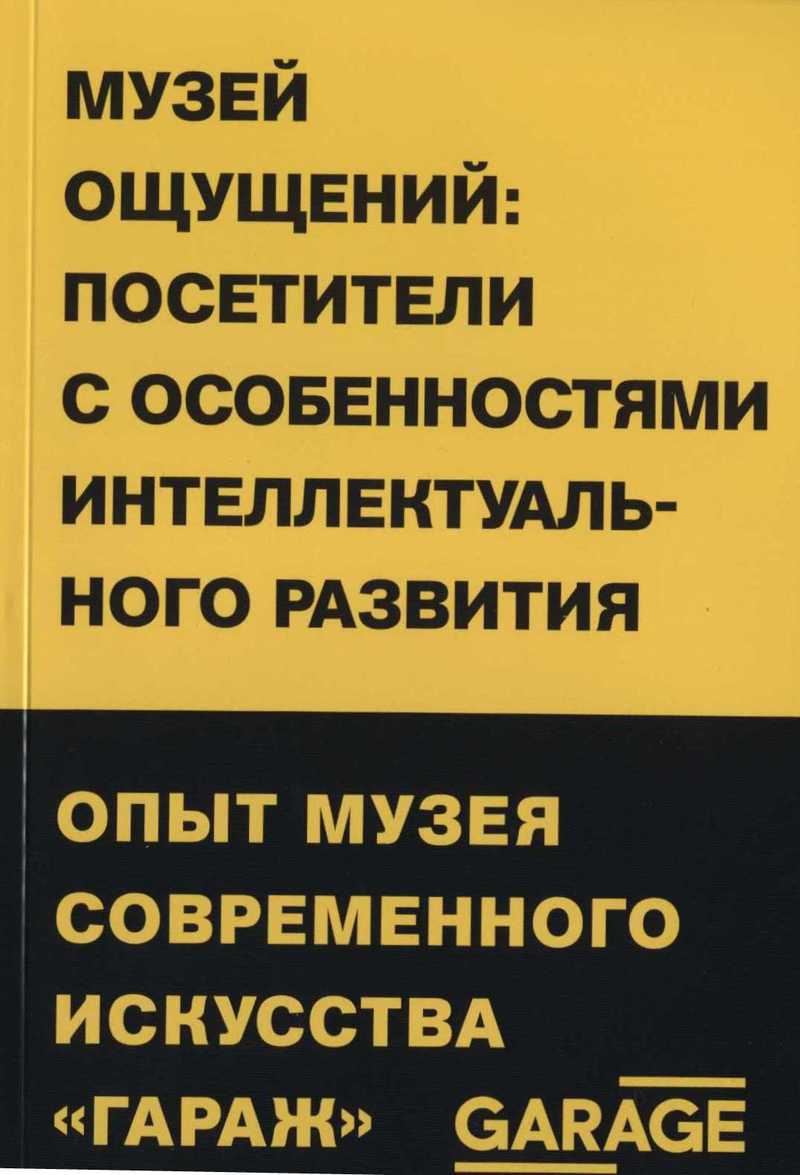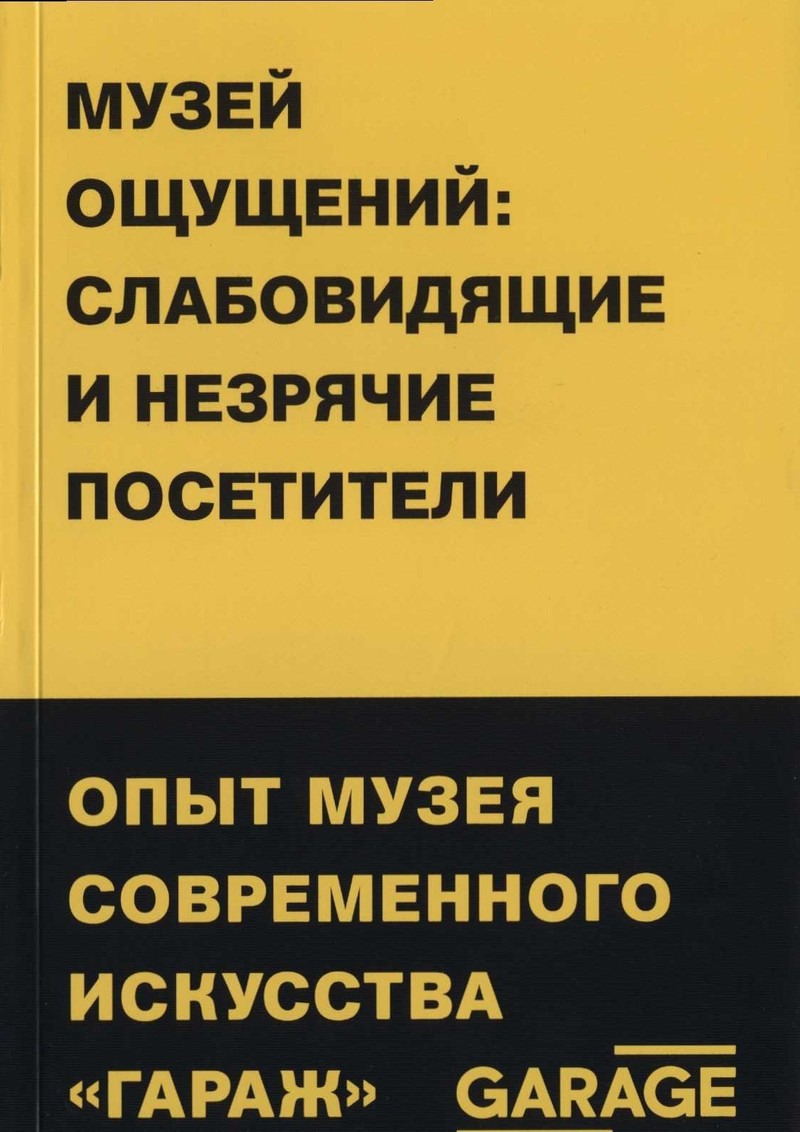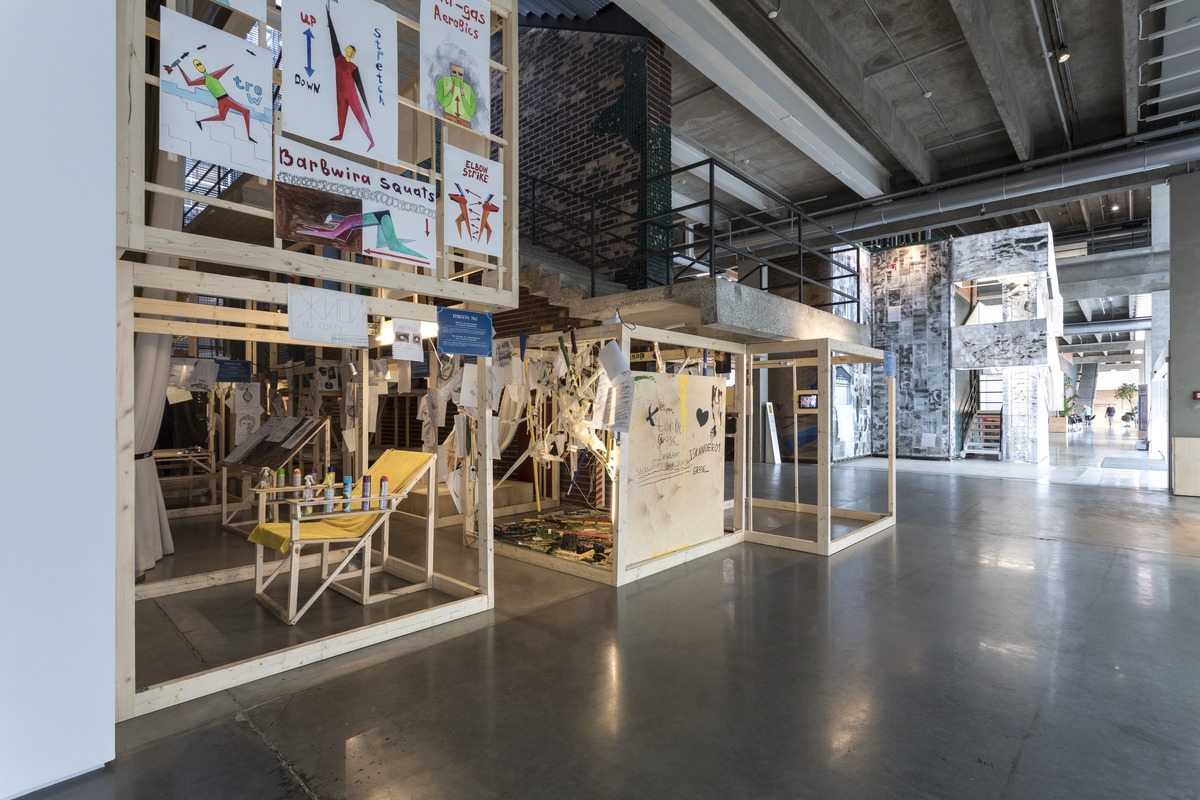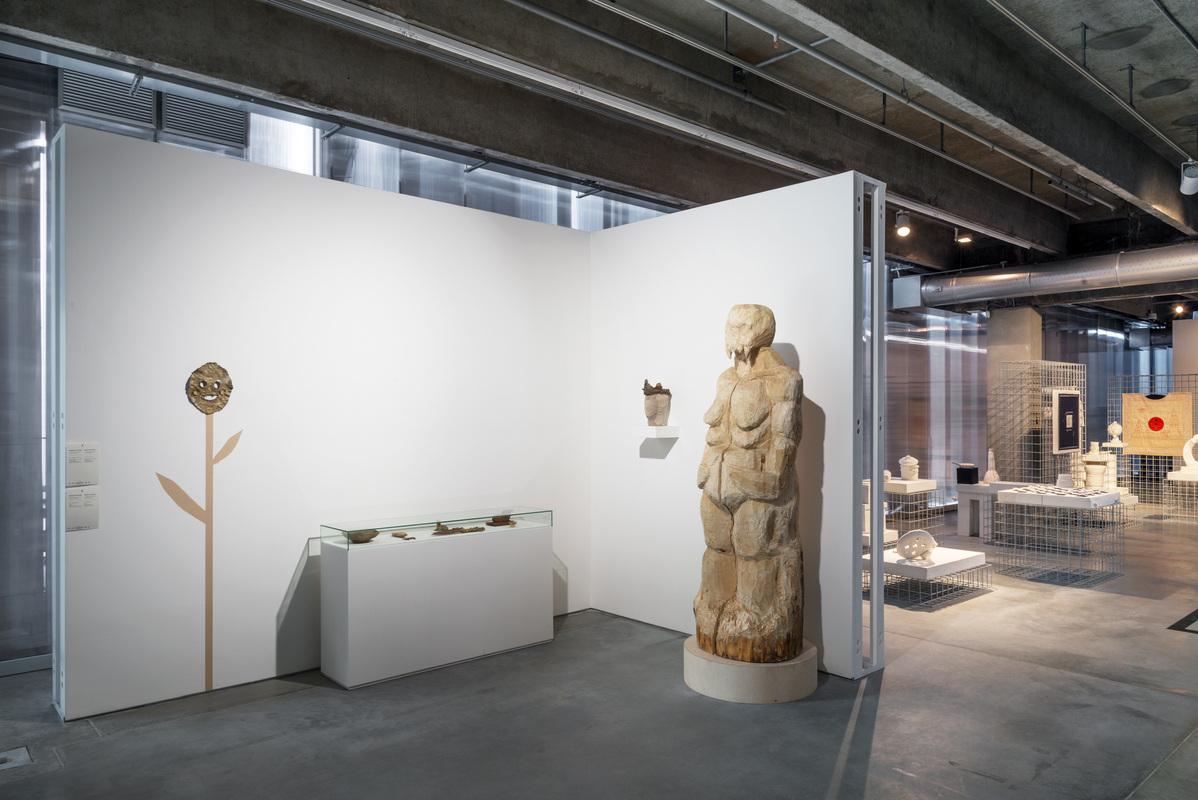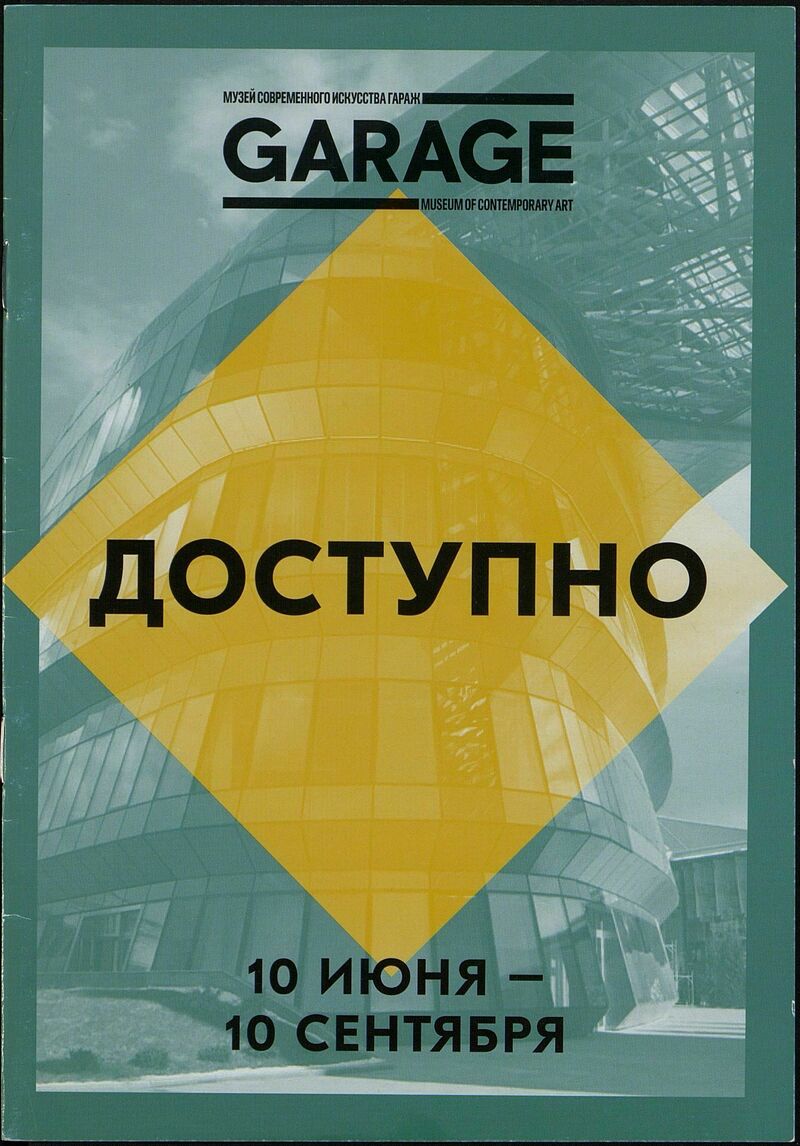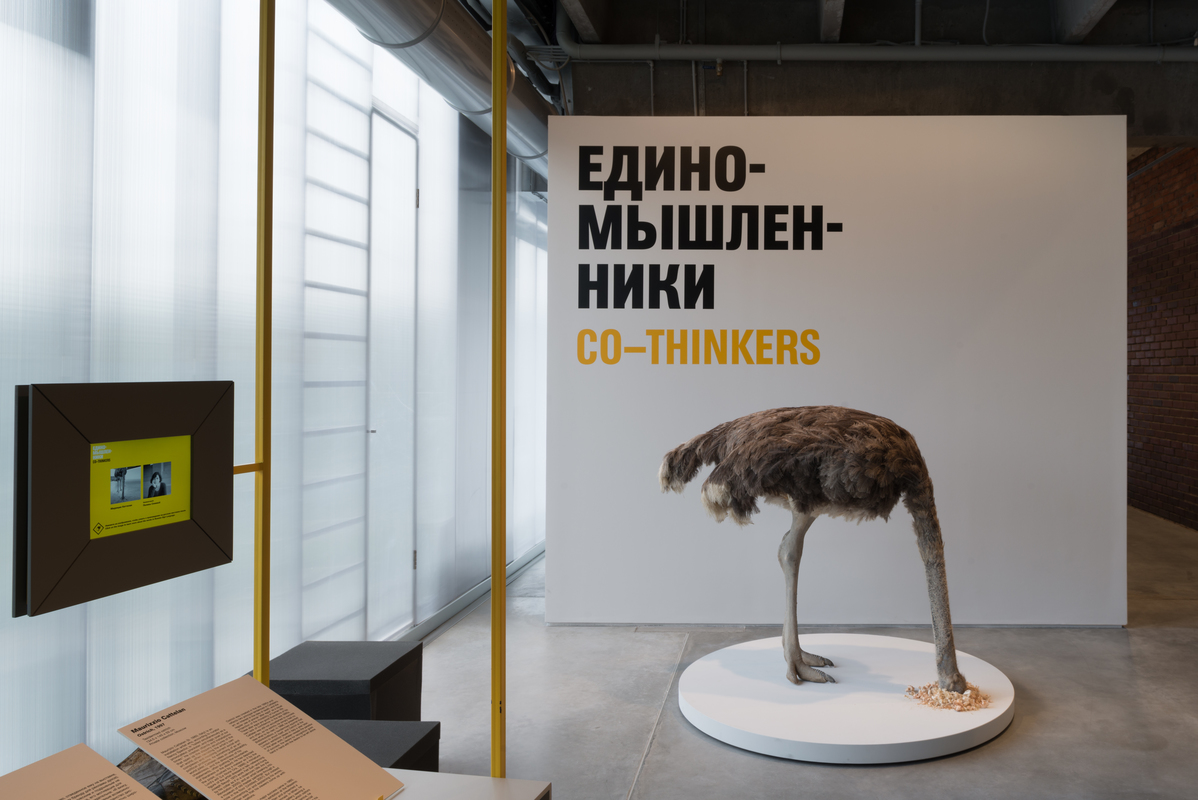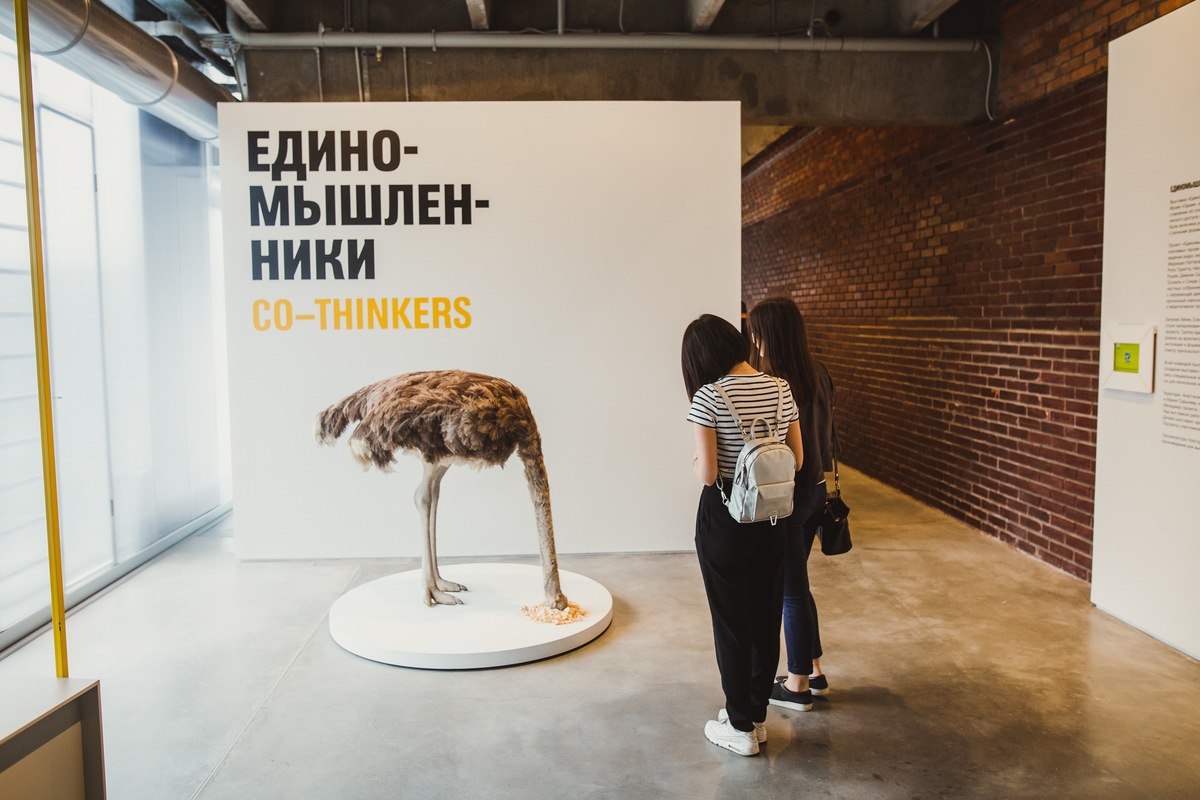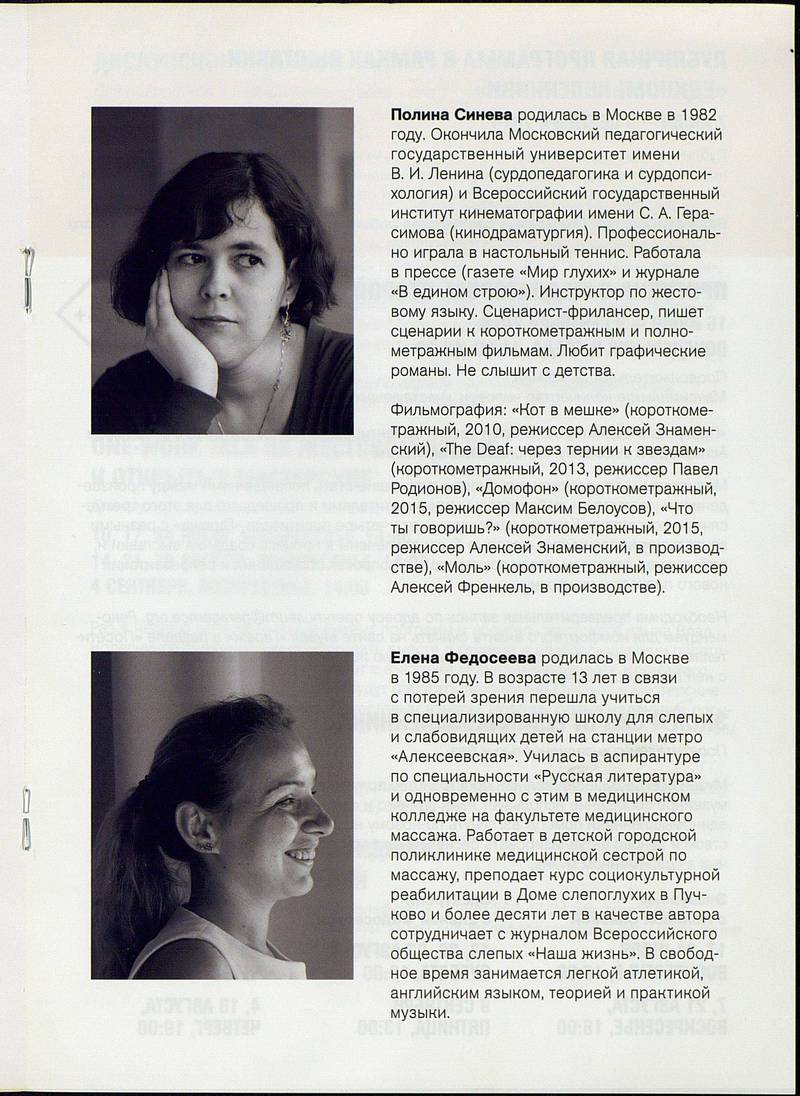This is the second text about inclusive practices at Garage. The first, which focuses on work with blind, partially-sighted, deaf, and hard-of-hearing visitors is here.
Interviewees:
Lada Talyzina was manager of inclusive programs for visitors with developmental disabilities from 2016 to 2018.
Galya Novotortseva was a custodian from 2012 to 2014, an administrator in Garage Educational Center from 2014 to 2015, and manager of inclusive programs for blind and partially-sighted visitors from 2015 to 2018.
Ekaterina Vladimirtseva was manager of the educational programs for children from 2011 to 2015 and head of Education Department from 2015 to 2021.
Maria Sarycheva was manager of educational programs for the professional community from 2013 to 2015 and a coordinator in Inclusive Programs Department from 2015 to 2016.
The Museum began facilitating events for visitors with developmental disabilities in 2015. Galya Novotortseva was responsible for work with visitors with developmental disabilities and with blind and partially-sighted visitors. The first adapted programs, supported by the Vykhod Foundation, focused on people with autism and other spectrum disorders. The Museum started to adapt tours for visitors with autism. They were developed with attention to the perception and communication characteristics of people with autism. For example, to prepare people for visiting an unfamiliar space a social history was created. This is a set of detailed instructions about visiting a museum that reflects specific things a person may encounter. It contains general information about the Museum, navigation within the building, “danger zones,” rules of conduct, and all current exhibitions. During the tours, additional visual and game materials, brochures with questions and answers, and checklists were used to help assimilate the new material. A “quiet room” was established to help with organized visits.
In 2015, the staff of Inclusive Programs Department began offering regular training courses aimed at understanding disability to ensure that Museum staff could relate to the diverse Museum audience and interact with it properly. The training consists of two parts. The first is theoretical and introduces etiquette and terminology, approaches to correct assistance for a person with a disability, the diversity of communities and their cultures, the specifics of interaction, and examines common stereotypes and myths about disability. During the practical part, this newly-acquired knowledge is applied to simulated situations that often occur in the Museum. During training on communication with deaf and hard-of-hearing visitors, Museum staff learn the basics of Russian Sign Language. A special course on Russian Sign Language for Garage staff was developed and continues to be taught today.
These training courses are primarily intended for those who constantly interact with visitors in the Museum building: security staff, cloakroom staff, information desk staff, café staff, and custodians. According to Alexandra Philippovskaya, a former coordinator in Inclusive Programs Department, from the very beginning the department tried to convey the message that inclusion is a value that should be shared by all staff. Department staff ran training on Russian Sign Language, wrote accessibility guides for Exhibition Department, and compiled dictionaries for all Museum departments (particularly Publishing Department, PR, and Museum editors, since they are involved with texts). The department aimed to share its functions with colleagues instead of appropriating all work processes.
In the fall of 2016, Lada Talyzina joined the department as a manager responsible for work with people with developmental disabilities. She was the first person recruited for a specific position. She had never volunteered or done an internship at the Museum, nor had she worked in other departments. At first, she developed tours and programs together with Galya Novotortseva, then began working independently.
Work with people with developmental disabilities mostly involves adaptation of exhibitions, the development of the tour routes, and running tours. For Lada Talyzina, one of the most memorable projects is her work on the First Garage Triennial of Russian Contemporary Art. It featured many works that were tempting to touch. “There was a gorgeous pan with meat dumplings by artists Olga Subbotina and Mikhail Pavlyukevich. After the very first tour, we were faced with the fact that everyone wanted to touch it because it was clear that it was a soft pan of dumplings (the artwork is made of coarse calico). Everyone wanted to lift the lid of the pan, which was sewn to the rest of the work. We asked artists to find a piece of the same cloth and they sent us some. We could then allow visitors to touch it to satisfy their interest.” In order to adapt exhibitions for people with developmental disabilities, Lada rewrote curatorial texts as easy reads. This technique involves replacing complex sentences with simple words and professional vocabulary with explanations. This was not an easy task as the texts were transformed and that raised questions from the curators. The designers and Kit Hell, former head of the design team at Garage, worked enthusiastically with the adapted texts and came up with numerous options for their appearance and placement.
Takashi Murakami’s solo exhibition Under the Radiation Falls was a challenging but successful experience in terms of inclusive practices. As Talyzina recalls, “I was afraid that I would have to rebuild everything because the exhibition was complex in terms of architecture. A group enters a corridor lined with various small figures and toys, and the rules forbid them to touch anything, but the items are not screened in any way and the passageway is very tight. In the end, everything was okay. And the exhibition was probably the most visited. We had 130 visitors with developmental disabilities, not counting accompanying persons. This is much more than before. Perhaps it was all about the artist’s name. Or maybe the families just saw the bright works on the posters. Or perhaps the huge promotional campaign for the exhibition was the reason. Anyway, a lot of people came and it was great.”

Generally, deaf and hard-of-hearing people visit the Museum more often than blind and partially-sighted visitors or visitors with developmental disabilities. The Murakami exhibition was an exception. There was a surge in attendance of visitors with developmental disabilities. Their number was approximately equal to that of deaf and hard-of-hearing visitors.
Work with people with developmental disabilities also includes educational programs, masterclasses, and adapted film screenings. Lada highlights one of the educational projects, the career guidance course The Museum is Your Friend for young people aged 17 to 26 with developmental disabilities. Visitors had the opportunity to look at the Museum as a cultural institution and find out about some museum professions. The first iteration of the course started in the spring of 2017. Talyzina says, “This project involved a lot of interaction with different departments in the Museum. It was interesting because it was not clear who would agree to present their work to people with developmental disabilities and to somehow adapt to the audience. Each person prepared a five-minute mini-lecture and then sent it or read it to me, and we discussed possible additions. The work on their part was amazing.” Participation was limited to departments that could provide opportunities for people with developmental disabilities. The tutors were Antonina Trubitsyna and Anna Dikovich from Garage Archive Collection, a security officer, guides, custodians, staff from the technical department, cloakroom staff, cleaning personnel, and receptionists. One of the students, Polina Tikhankova, a girl diagnosed with autism, completed a five-month internship in the Archive. She sorted ephemera with information about places and dates of various events, put them in envelopes, and entered them into a special database. Lada Talyzina noted the responsiveness of Archive staff to Polina: “On the last day of the internship we had a tea party, and all the archive staff came. Everyone talked to each other. It turned out that, while working without my supervision Polina had developed relationships with all staff members. And that was fantastic." Another course participant joined the Museum team as a teaching assistant organizing weekend masterclasses for children and teenagers. The course was also provided for adults from Psychoneurological Boarding School No. 4.

In 2017, Experiencing the Museum, an annual international training course that has been running since 2015 focused on working with visitors with developmental disabilities. Talyzina noted, “We started with issues we were interested in, then we looked for museums focusing on them by communicating with colleagues and looking at their work. To understand the capabilities of museums in the USA I browsed lots of museum websites. If I want someone to tell me about sensory rooms I need to understand where they have been set up in a way I like. I looked for museums, aggregated information on their sensory rooms, looked at the spaces, contacted people, asked if they had this or that, and asked them to tell me how everything worked in their sensory rooms. On this topic I got in touch with Hana Elwell at the Brooklyn Children's Museum. And people from MoMA told me about their amazing programs for people with dementia, Alzheimer’s disease, and others.”
Alexandra Philippovskaya assisted Lada with the training. She prepared the contracts and helped to plan the timing of events.

Colleagues from specialized foundations gave a positive assessment of Inclusive Programs Department's first years of work and were prepared to exchange experiences and collaborate. Talyzina says, “When someone in our area of work asks, ‘Where can I find out about this?’ the answer is often, ‘Garage has it. Garage has had it for ages. And Garage also has that.’” However, after a while, department staff began to feel that Garage had become ubiquitous. It created a feeling of “colonialism” that was discussed during the organization of regional and external exhibitions. Lada notes, “At some point, the fact that everyone knew about Garage made me feel good, and it was great to share our experience. But later it was as if we wanted to take everything for ourselves.” The crucial moments of this process were the exhibition project Co-thinkers, shown not only in Moscow but also in Yekaterinburg and Nizhny Novgorod, and participation in the international exhibition Astana-EXPO in 2017.
Ekaterina Vladimirtseva commented on the exhibition in Astana: “It was very important not to be colonial. And to that end, all the people on site were local, from Almaty and Astana. We offered an additional training program because they all came from different backgrounds: some were teachers, others were tour guides. And we rapidly immersed them in the world of art. Masha Sarycheva and I laughed at the fact that the Russian art group ZIP has never followed Beuys in any art history program. We just had no other way to explain the story behind ZIP quickly.” Despite the project being positioned as an exchange of experience with local specialists, in reality it was impossible to organize it efficiently.
The exhibition Co-thinkers, which took place at Garage in the summer of 2016, was a way to expand the concept of inclusion to the category of mutual understanding. Four regular Garage visitors with different forms of disability curated the exhibition together with Garage curators Maria Sarycheva and Anastasia Mityushina. Maria Sarycheva describes the project: “It was Anton Belov’s idea. I suggested joining forces with our visitors with disabilities as co-curators. There were four people: Lena Fedoseeva, a blind journalist who regularly came to us, supported us, and gave feedback on our tours for blind visitors; Polina Sineva, a deaf screenwriter; Zhenya Lyapin, a theater university student who uses a wheelchair; and Veta Morozova from the Vykhod Foundation, which was one of the first organizations to raise awareness of autism in Russia. Chief Curator Kate Fowle assigned this exhibition to Anastasia Mityushina and me. This was my first curatorial experience at Garage. It was a tough project to organize in the time available. No inclusive project should be done in such a short timescale. The idea was to integrate the whole group of co-curators from the very beginning of the project, from the selection of works. There were more than 60 works in the longlist and they belonged to private collectors that Anastasia knew. In order for Lena Fedoseeva to make her selection, Galya and I made audio descriptions of all of them. We had only an Excel spreadsheet with 5 x 5 cm images (at best). We had not seen the works. Veta has autism, so integrating her into group formats and face-to-face discussions at such a fast pace turned out to be impossible. You need to slow down when working on inclusive projects. But neoliberal logic makes institutions work at a very fast pace. It was impossible to integrate people with disability experience into the work process at the pace at which Garage worked then.”
However, the project also had positive aspects. The exhibition foregrounded the vision and experience of co-curators with disabilities. They gained experience in a new profession and offered a critical perspective on curatorial activities. There were also important changes in the way Gorky Park worked. Garage top management and project manager Anastasia Lesnikova arranged for two ramps to be installed on the central staircase of the park to simplify access to the Museum for wheelchair users.
Maria Sarycheva comments, “We integrated the adaptation tools that we used as part of the educational program into the exhibition. We had tactile models, stationary modules with video in Russian Sign Language, and easy read texts. Commentaries written by art critics and by non-professional “co-thinkers” were presented together. We allowed for user experience inside the sacred exhibition space, integrated it, and moved it beyond the framework of an educational program to the space of the exhibition. This project was not aimed at the disability community. It was intended for the general Garage audience, to show visitors that the Museum was actively developing in this direction.”

In 2017, the exhibition Co-thinkers was shown at the Boris Yeltsin Presidential Center in Yekaterinburg. Lada Talyzina traveled there to train center staff to work with people with developmental disabilities. As Lada recalls, “Two business trips were planned for Yekaterinburg. When I arrived I could only tell people about the work we had already done for this exhibition and ask them to do the same at their venue. We brought the tactile models and all the materials, so we did not have to look for anyone to manufacture them in Yekaterinburg”. Galya Novotortseva adds, “We were unable to include the local community in the exhibition itself, although we did originally intend to do so. Even so, we implemented this part of the program to some extent. In Moscow the exhibition hosted discussion clubs led by Zhenya Lyapin. In Yekaterinburg the Yeltsin Center invited a blind man, an art critic by training, who, if I am not mistaken, lost his sight as an adult. They developed this part of the program—the selection of works, topics for discussion, and method of interaction—on their own.” In 2019 and 2020, the exhibition toured to Nizhny Novgorod, where Inclusive Programs Department team tried to adapt the exhibition in a different way. Talyzina says, “In Nizhny Novgorod, we wanted the Arsenal (the Volga-Vyatka branch of the Pushkin State Museum of Fine Arts, where the exhibition was shown) to acquire a decent foundation in order to quickly adapt exhibitions on their own. Alina Zhekamukhova (from Inclusive Programs Department) and I went to meet with local organizations focusing on people with autism and asked what they needed, what they wanted to get from the Museum, what paths they followed, and why. Together with Arsenal staff we got to know organizations for people with developmental disabilities and for deaf people. We also discussed what had been done in conjunction with organizations already familiar with the Arsenal. We found the approach we needed. But, in the end, it seems we did not cope with problems of delegation. I wanted to delegate everything to the Arsenal staff because I was not there all the time. I came often, but not regularly. We met with organizations and discussed what needed to be done. Then it turned out that nothing has been done because the contractor made the wrong models or had not made them at all, contrary what was promised. When you are on the outside it’s impossible to tell the people who are already busy to go to a dozen organizations and try to find one able to do the work. Therefore, we were unable to provide tactile models on site, no matter how hard we tried. So, all the work and all the time spent were for nothing. The only good thing was that we abandoned the idea of bringing in the co-curators with disabilities from Moscow. In Yekaterinburg we involved the same people as in the Moscow exhibition, but in Nizhny Novgorod we recruited local people with disabilities. We partnered with an older woman, a museum custodian. She was a co-thinker for this exhibition. This is probably the only difference from our other projects. There were other “co-thinkers” in Nizhny Novgorod, but they worked in exactly the same way as in Moscow.”

Based on the Museum’s experience, Inclusive Programs Department published a series of teaching aids under the general title Experiencing the Museum. In 2018, it focused on work with blind and partially-sighted people and people with developmental disabilities. In 2019, it published the manual Experiencing the Museum: Deaf and Hard-of-Hearing Visitors. Practices at Garage Museum of Contemporary Art. Ekaterina Vladimirtseva, Vlad Kolesnikov, Galya Novotortseva, Marina Potanina, Lada Talyzina, and Alexandra Filippovskaya worked on the publications. Maria Sarycheva was a contributing editor.
Sarycheva sums up: “In fact, we did many things for the first time. We experimented a lot and we had the finances to do this. We also had the management’s support. We had more opportunities and proactive employees from other departments who agreed to get involved in this kind of project. We did a lot of visionary things. We disliked the formulation “sociocultural rehabilitation of people with disabilities with the help of the museum.” This discourse was proposed by Moscow’s Darwin Museum throughout the 1990s and 2000s. We fought against it. Now I understand that people did the best they could. They used the tools and descriptive language to integrate disability into medical concepts. Some employees did this without any institutional support. […] I have met tired, grown women who did this work alone. And now I would not criticize them like I did then. That would demonstrate a lack of respect for the work done before us. Now we think of a community of people working on inclusion, experts with disabilities and our predecessors as a single collective. We have been working for this forever and a day. Conversations in the field were too competitive. […] Now I have an online chat for over a hundred people that I launched two months ago, and it’s just a Moscow chat involving all the people working on inclusion, all the experts with disabilities, everyone who has been working in this field in the last 10-15 years. Then it seemed to us that we were the only ones. Now there are a lot of us, and this is also thanks to Garage.”
Cover photo by Anton Donikov.
